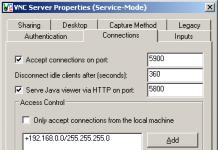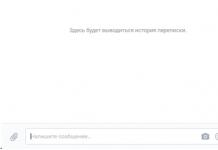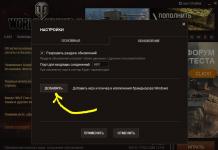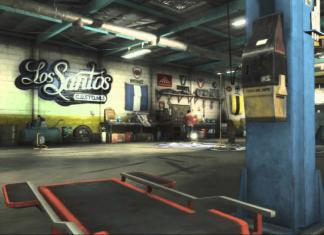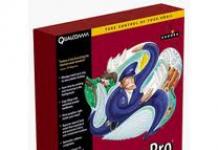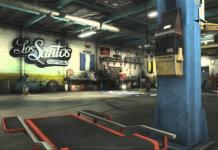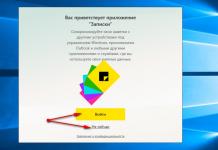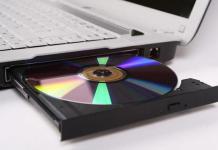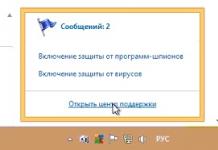Fair, not overpriced and not underestimated. There should be prices on the Service website. Necessarily! without asterisks, clear and detailed, where technically possible - as accurate and concise as possible.
If spare parts are available, up to 85% of complex repairs can be completed in 1-2 days. Modular repairs require much less time. The website shows the approximate duration of any repair.
Warranty and responsibility
A guarantee must be given for any repairs. Everything is described on the website and in the documents. The guarantee is self-confidence and respect for you. A 3-6 month warranty is good and sufficient. It is needed to check quality and hidden defects that cannot be detected immediately. You see honest and realistic terms (not 3 years), you can be sure that they will help you.
Half the success in Apple repair is the quality and reliability of spare parts, so a good service works with suppliers directly, there are always several reliable channels and your own warehouse with proven spare parts for current models, so you don’t have to waste extra time.
Free diagnostics
This is very important and has already become a rule of good manners for the service center. Diagnostics is the most difficult and important part of the repair, but you don't have to pay a penny for it, even if you don't repair the device based on its results.
Service repairs and delivery
A good service values your time, so it offers free delivery. And for the same reason, repairs are carried out only in the workshop of a service center: they can be done correctly and according to technology only in a prepared place.
Convenient schedule
If the Service works for you, and not for itself, then it is always open! absolutely. The schedule should be convenient to fit in before and after work. Good service works on weekends and holidays. We are waiting for you and working on your devices every day: 9:00 - 21:00
The reputation of professionals consists of several points
Company age and experience
Reliable and experienced service has been known for a long time.
If a company has been on the market for many years and has managed to establish itself as an expert, people turn to it, write about it, and recommend it. We know what we are talking about, since 98% of incoming devices in the service center are restored.
Other service centers trust us and refer complex cases to us.
How many masters in areas
If there are always several engineers waiting for you for each type of equipment, you can be sure:
1. there will be no queue (or it will be minimal) - your device will be taken care of right away.
2. you give your Macbook for repair to an expert in the field of Mac repairs. He knows all the secrets of these devices
Technical literacy
If you ask a question, a specialist should answer it as accurately as possible.
So that you can imagine what exactly you need.
They will try to solve the problem. In most cases, from the description you can understand what happened and how to fix the problem.
The lack of a “PrintScreen” button on “Macs,” as MacBook users call them, often confuses beginners who are just starting to master these creations from Apple. Taking a screenshot on a MacBook is actually quite easy, and there are two ways to do it.
The first way to take a screenshot from the screen of such a laptop is using hotkeys. So, if you need to take a screenshot of the entire screen and upload it to a file on your desktop, then the following key combination will be useful to you: “Command” + “Shift” + “3”. If you do not need the entire screen, but only a selected area, then you will need another combination: “Command” + “Shift” + “4”. The same combination, adding a space at the end, will move the selected program window to a file. To save the resulting screenshot to the clipboard, add the “Ctrl” key to the combinations. Information about which combinations perform this function on your MacBook can be found in Settings. To do this, you need to find the “SystemPreferences” section, in it – “Keyboard & Mouse”, and then – “KeyboardShortcuts”.



As you can see, taking a screenshot of a MacBook laptop is quite easy - you just need to choose the most convenient method for yourself.
The absence of a “printscreen” button on MacBooks often puzzles new owners of these devices. Some even think that this operation is impossible on an Apple laptop. In fact, everything is implemented very simply.
How to take a screenshot on a MacBook Air or Pro - read this manual.
The first method involves using hotkeys. If you want to capture the entire screen and place it in a file on your desktop, press “Command” + “Shift” + “3”.
If you need a snapshot of a limited area, use the same set of elements, only instead of a three there will be a four. And if you add a space at the end, the window of the marked utility will move to the file. To save the completed screenshot to the clipboard, add the “Ctrl” button (at the end) to the typing.
More information about the set of elements to perform different functions is given in the MacBook settings. To do this, go to the “KeyboardShortcuts” section.

How to take a photo using software
Did the method described above seem inconvenient? Or just didn’t suit you for some reason? Then try using special applications. One of the most common solutions is Apple’s “Grab” product. You can find it in the settings of your MacBook.
Launch the widget, find it in the snapshot section, and inside the latter - the required action. This mini-software allows you to capture both the entire display image and individual fragments. Immediately after executing the frame, the utility will clarify what to do with it - save or delete? If you leave it in memory, then where exactly to put it.
As you can see, taking a screenshot on a MacBook is as easy as shelling pears. It is enough to choose a more convenient method for yourself. As for the second method, everything is not limited to “Grab” - on the network you will find a lot of other applications with the same functionality. Below we will look at the capabilities of some of them.
Skitch app
This is a multifunctional solution. It allows you not only to take a picture, but also to make changes to it. You can download the application from the iTunes section on the Apple resource online.
- Download the utility and open it.
- Enter your registration information. The program icon will appear at the top.
- Frame your shot using the following elements:
- Shift + Command + 5 (selecting the desired zone);
- the same set of keys, but + 6 at the end (a snapshot of the entire table);
- the same set of keys, but + 7 at the end (outlining the desired area, and you can make a picture equal on all sides).
After completing the screen, go to the editor. Here you can give free rein to your imagination and finish drawing something, adjust shades, add text information and much more.
After making adjustments, you need to save them. You can send a picture over the network directly from the utility.
LittleSnapper
Another interesting software, but unlike the previous one, you will have to pay for it. Whether you need this product or not, decide while using the demo version.
To take a screenshot, follow these steps:
- Download the software from some resource on the Internet.
- Install and open the program.
- You will discover a wealth of functionality, including the ability to change pictures.
- It’s not difficult to take a screenshot; to do this, press the following keys:
- option + command + 3 (frame of the entire table);
- a similar set of elements, but +4 at the end (snapshot of a limited area);
- the same thing, but +5 (separate window).
After clicking one of these combinations, the photo frame will be uploaded to the application. Here you can start processing it if you don’t like something. The picture can be saved in various formats.
Where are the screenshots saved?
Many MacBook owners have encountered a situation where they took a screenshot and then could not find it on their device. The operating system automatically sends all pictures to the desktop. However, this inevitably leads to littering.
It’s ideal to get a folder for this task so that all the pictures can be saved there directly. This task is doable, and everything is done easily:
- Open a terminal and copy this line into it: defaults write com.apple.screencapture location ~/Desktop/Screenshots.
- Click on the “Enter” element.
- Enter the command killall SystemUIServer
- Press the same button as in the second step.
That's all - now all the pictures will go to the screenshots folder on the desktop. Other paths can also be specified. Just write in Cyrillic.

Now you know how to take a screenshot on a MacBook. Taking a screenshot on a MacBook, as you understand, can be done in two ways. Of course, on Windows, taking a screenshot is a simpler matter, because there is a special button for this. A computer keyboard is all you need for this operation.
Taking a screenshot on a MacBook is also possible, and it won’t take much time. It is only important to remember the sequence of stages, how the photograph is taken, and where the finished frame is saved in the laptop.
This article discussed not only how to take a screenshot of the screen, but also how to create a folder for saving pictures in the system. The latter is highly recommended to prevent your workspace from becoming cluttered.
Every operating system has the ability to take screenshots. This function is convenient when the user needs to quickly capture information from the display and save it. Thanks to screenshots, you don’t have to rewrite information from the site, take pictures of the screen, and so on.
Let's figure out how to take a screenshot on a MacBook using all possible methods. The methods are very different from those built into the Windows operating system, so this material will be extremely useful for beginners.
Shooting options
Depending on the task set by the user, you can take a screenshot on a MacBook in the following areas:
- screenshot of the entire desktop;
- screenshot of the selected part;
- snapshot of a separate window;
- screenshot of the selected menu;
- screenshot from the Touch Bar.
As you can see, the variability is very different from Windows, where such choice can only be achieved using third-party programs.
How to take a screenshot on MacBook Air?

On all devices that run the Mac OS operating system, the methods are no different. Therefore, the instructions are suitable, but even for iMac all-in-one PCs. Let's figure out how to take a photo of the entire screen on a MacBook:
- Find the Shift, Command and number 4 keys on the device’s keyboard;
- press them together;
- The finished desktop frame will be automatically saved. It can be found among the remaining files on the desktop are in PNG format. The image will contain all the windows that were on the screen at the time the specified keys were pressed.
Snapshot of the selected part

If you do not need a screenshot of the entire MacBook screen, then this method is suitable for you. With it, you can manually select an area of the screen and capture it as a screenshot. To do this, follow these steps:
- hold down the Shift+Command and number 4 keys on your keyboard at the same time;
- your cursor will change to a crosshair;
- move the cursor to one of the corners of the future image and hold down the mouse button (touchpad);
- drag the cursor over the entire area that needs to be captured;
- release the mouse button;
- The screenshot will be automatically saved on your desktop in PNG format.
To cancel a selected area, you just need to hold down ESC on your MacBook keyboard.
How to make a print screen on a MacBook for a separate window?

If you do not want to manually select an area of a specific window, then use the following method:
- a crosshair will appear on the display again instead of a cursor;
- now press spacebar;
- the crosshair will change to a camera icon;
- hover over the required window;
- right-click mouse or touchpad;
- The file will be saved on your desktop in PNG format.

You can also cancel the creation of a window image on a MacBook using the ESC button.
Menu snapshot

This method is in many ways similar to the previous two. To take a screenshot on a MacBook within one menu, follow these steps in order:
- hold down the Shift+Command+4 buttons;
- then you can manually select the menu area with a crosshair, or click on the space bar;
- in the second case, click the camera icon in the area of the required menu.
You can take a screenshot on a Mac with the Touch Bar using the combination Shift+Command+6.

By default, all screenshots on a MacBook are saved to the desktop.

In order not to clutter up your desktop, but to immediately add a picture to the clipboard, in addition to the specified combinations, hold down Control on the keyboard. Remember that not all programs allow you to take pictures of their windows. You can open images using the standard Preview utility, Safari, as well as through third-party applications from the App Store designed for viewing and editing images.
Taking a screenshot without a keyboard
If for some reason you do not want to use hotkeys, you can always use a special Mac OS utility.
From the Launchpad/Others menu, select the Screenshot utility. It provides similar functionality from its menu.

It is also convenient to use the Spotlight menu to search for a program, using the key combination Command+Spacebar




